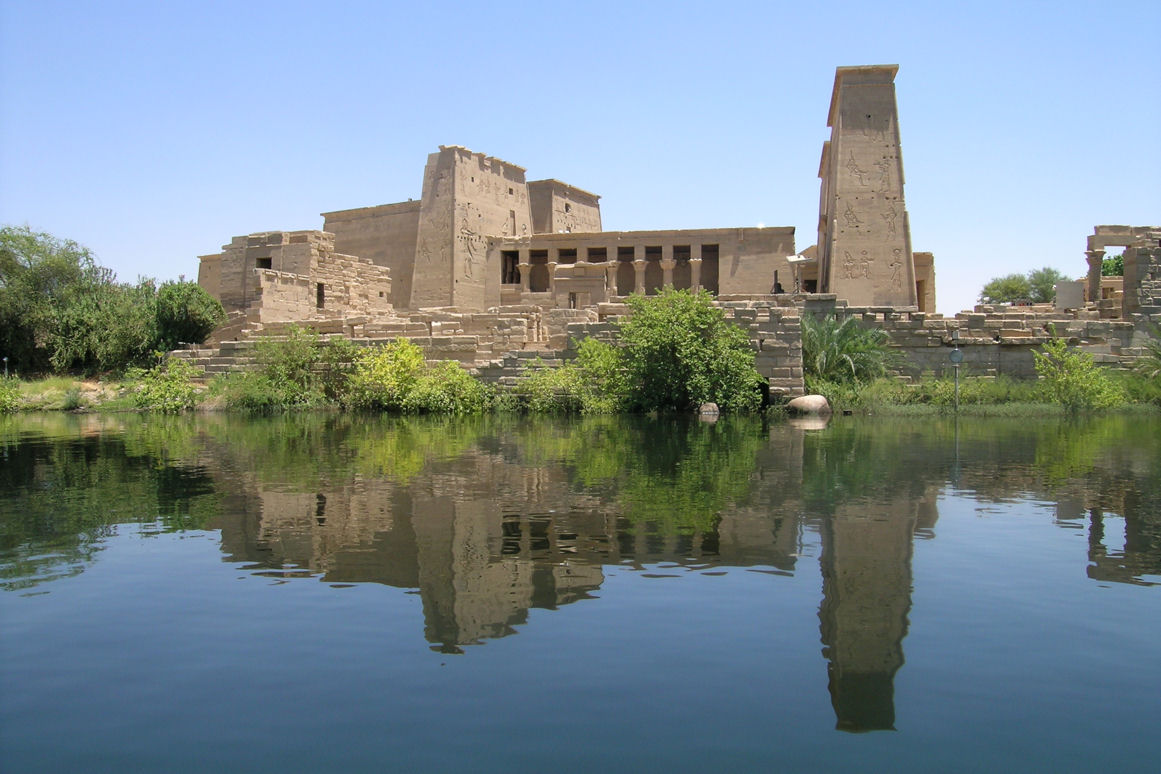Philae is the most picturesque of all Egypt’s temples, thanks to its site – it sits on a Nile island reached by small motor launch. This Ptolemaic (Graeco-Roman) era temple is devoted to Isis, whose cult was to survive into early Christian times. After the building of the Aswan Dam (1898–1902), the island’s temples were submerged for a part of each year. With the building of the High Dam (1969–71), the temples were relocated to nearby Agilika Island, which was landscaped to match the original site.
1- Kiosk of Nectanebo
Boats drop visitors at a double stairway that leads up to the Kiosk of Nectanebo, a small structure erected during the 4th century BC that acts as a gateway to the site.
2- Colonnaded Courtyard
Beyond the kiosk is an elongated courtyard flanked by colonnades. The west colonnade (to the left) has columns on which every capital is different and a rear wall punctuated by windows overlooking the water. The east colonnade is interrupted by a series of ruined structures.
3- Temple of Isis
The centerpiece of Philae is this beautiful, small temple built over several hundred years by Ptolemaic and Roman rulers (main image and below). It is fronted by an ancient Egyptian pylon and two stone lions.
4- The Sanctuary
Beyond a second pylon, a hypostyle hall leads to vestibules that culminate in the innermost holy sanctuary, containing a stone pedestal that once supported the
goddess Isis’s barque.
5- The Birth House
The colonnaded Birth House (left) is where the pharaohs legitimized their rule as mortal descendants of Horus by taking part in rituals celebrating the god’s birth. At the bottom of the rear wall are scenes of Isis giving birth to Horus in the marshes.
6- The Osiris Rooms
If the caretaker can be persuaded to unlock the way (with a tip), some upper rooms with reliefs depicting the resurrection of Osiris after his dismemberment by Seth.
7- Hadrian’s Gate
West of the temple is a small vestibule dedicated by the Roman emperor, inscribed with the date 24 August AD 394. Above the lintel, Hadrian is depicted presenting himself before a pantheon of ancient Egyptian deities.
8- Temple of Hathor
East of the main building is a small, ruinous temple, which still has two columns topped with Hathor heads, as well as a fine relief depicting musicians with the dwarf god Bess playing a harp.
9- Kiosk of Trajan
This imposing kiosk was built around AD 100 by the Roman emperor Trajan and served as a royal landing for the temple. It combines Roman architecture with Pharaonic detailing.
10- Sound and Light Show
Of all Egypt’s sound and light shows, the one at Philae is the best (above). It consists of a one-hour floodlit tour through the ruins and is a highly atmospheric experience.
Don’t Miss our Cheap holidays to Egypt


